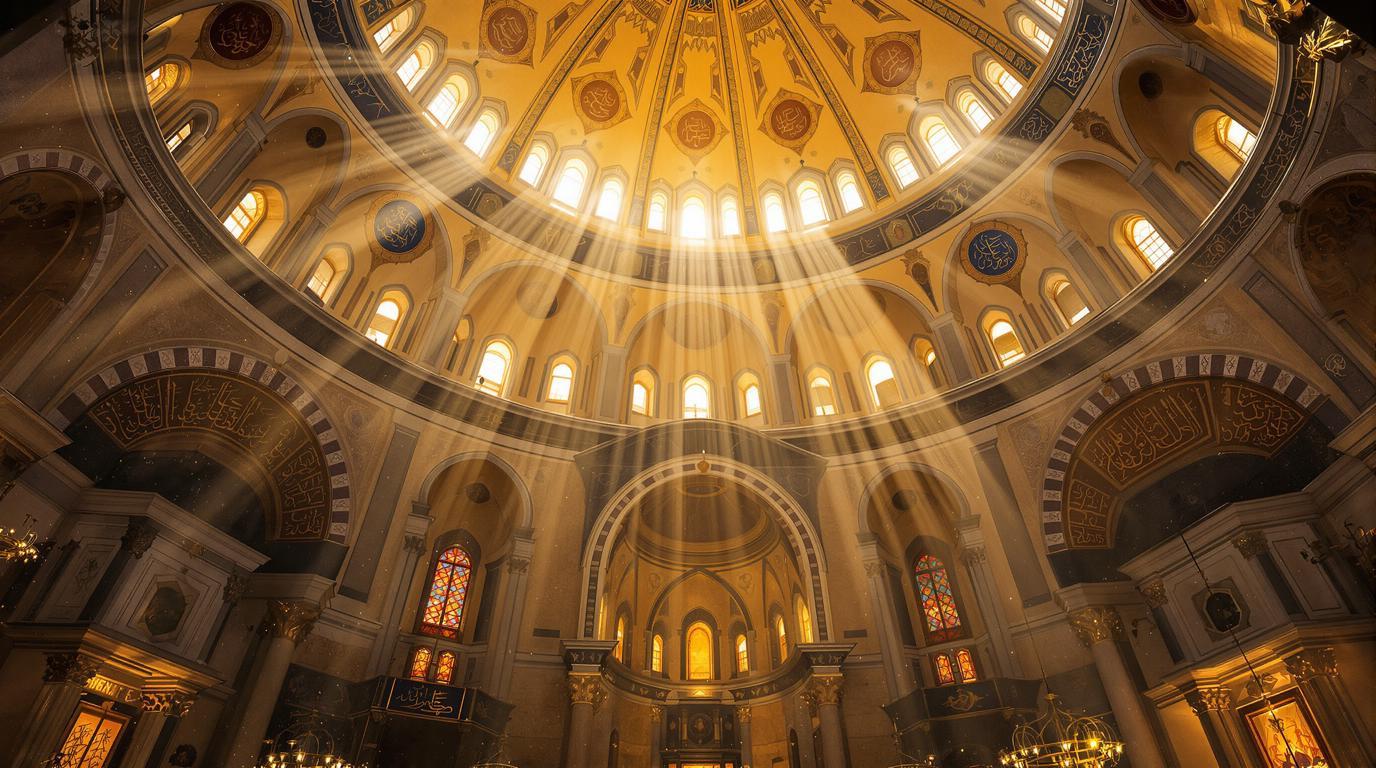Istanbul’s Hagia Sophia: Where East Meets West Through 1,500 Years of History
A monument of shifting identities
Standing beneath the massive 102-foot dome of Hagia Sophia feels like time travel through 1,500 years of history. This architectural marvel in Istanbul has lived many lives – beginning as a Byzantine cathedral in 537 AD, transforming into an Ottoman mosque in 1453, becoming a museum in 1935, and returning to mosque status in 2020. Few buildings on Earth have witnessed such dramatic cultural transitions while remaining structurally intact.
The architectural wonder that influenced a millennium of design
When Emperor Justinian first saw his completed cathedral, he reportedly exclaimed, “Solomon, I have outdone thee!” The dome’s innovative engineering solved a problem that had puzzled architects for centuries: how to place a circular dome over a square base. The solution – pendentives that transition the square to a circle – influenced religious architecture from medieval European churches to Islamic mosques across continents.
Where Byzantine mosaics meet Islamic calligraphy
Hagia Sophia’s interior showcases a remarkable cultural synthesis. Glittering Byzantine mosaics depicting Christ, Mary, and saints share space with massive Ottoman medallions inscribed with Arabic calligraphy. During restoration work in the 1930s, conservators carefully uncovered Christian artwork that had been plastered over during the Ottoman period, creating what is now a living museum of religious art spanning centuries.
“What makes Hagia Sophia truly unique is how it represents layers of history rather than erasing them. Each civilization added to its beauty rather than diminishing it,” explains Dr. Ayla Ödekan, Turkish art historian.
The mysterious marble doors that defy explanation
Among Hagia Sophia’s many mysteries are its massive purple porphyry doors, weighing several tons each. According to local legend, they were salvaged from Noah’s Ark. More credible historians believe they were taken from the Temple of Artemis at Ephesus – one of the Seven Wonders of the Ancient World. Touch the cool marble and you’re connecting with stones cut over 2,500 years ago.
The Viking graffiti hidden in plain sight
Look closely at the marble railings of the upper gallery and you’ll spot something unexpected: Norse runes carved by Viking mercenaries who served in the Byzantine emperor’s Varangian Guard during the 9th century. One inscription simply reads “Halfdan was here” – perhaps history’s earliest tourist graffiti, predating modern visitors by over a millennium.
Where the light transforms like nowhere else
Hagia Sophia’s 40 windows create a lighting effect that seems almost supernatural. Morning light streams through eastern windows, creating an ethereal glow reminiscent of natural light phenomena. By afternoon, the western windows illuminate different sections, making the interior appear to shift and breathe throughout the day. This orchestration of light was no accident – Byzantine architects understood how illumination could create spiritual atmosphere.
“I’ve visited Hagia Sophia at different times of day for twenty years, and I still notice new details in how the light plays across the surfaces,” says Mehmet Kalkan, local tour guide.
Beyond Hagia Sophia: Istanbul’s hidden waterside gems
After experiencing this monumental structure, escape the crowds by taking a ferry across the Bosphorus. The Asian side offers tranquil neighborhoods like Kuzguncuk with its colorful Ottoman houses and multicultural past. This watery journey between continents provides spectacular views of Istanbul’s skyline and hidden natural treasures along the shore that most tourists never discover.
The wisdom of experiencing it twice
Visit Hagia Sophia early morning (opening at 9am) to avoid crowds, then return just before sunset when the low light creates a mystical ambiance similar to the enrosadira phenomenon in the Alps. The building’s massive structure seems to glow from within during these golden hours, and the marble reflects light in ways that photographs simply cannot capture.
Standing at precisely 41.0086° N, 28.9802° E, Hagia Sophia isn’t just a building – it’s a crossroads where East meets West, where Christianity converses with Islam, and where the ancient world extends a hand to modernity. Like Greece’s mythical stone arches, it seems to promise something eternal – not love perhaps, but a reminder that human creativity and spiritual yearning can create something that transcends the civilizations that built it.
